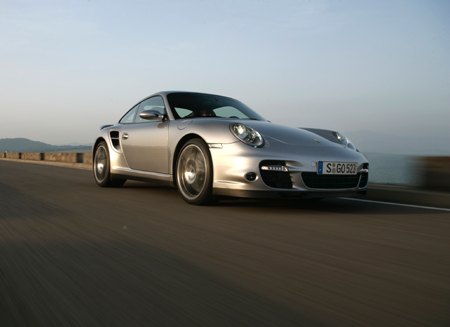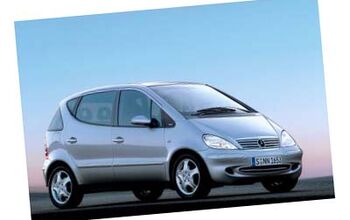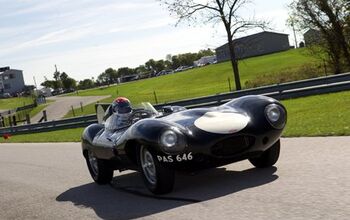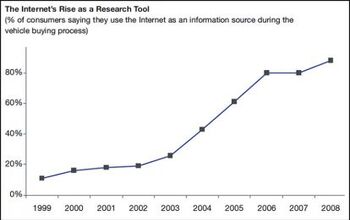Porsche Uber Alles
Every month the pages of car magazines sport autoerotic photographs of the greatest thing to hit the roads since, well, the last time. In their celebration of unbridled speed and handling, reliability simply isn’t a major factor. It should be. A high performance car may be fast, furious and fun, but if bits keep falling off, if it spends more time in dry dock than cruising the highways and byways, it's nothing but a pretentious, expensive fraud. And yet automakers continue to build "supercars" that can't even run hard for an entire day without some kind of extremely expensive tinkering afterward.
There's a long, sad history of big name cars that show up for a magazine road test, only to go weak in the knees when the stop watches come out. Once at the Transportation Research Center in Ohio I watched a bewinged, bellowing, NACA-ducted Lamborghini Countach fail to crest 140 mph. Then there was a cross-country comparo featuring a Lamborghini Diablo and some Ferrari-of-the-month. The article neglected to elaborate on the fact that a van containing mechanics and assorted parts followed the cars at a discreet distance.
Back in 2002, the redoubtable Brock Yates, late of Car and Driver, challenged Ferrari/Lamborghini (for the purposes of this article they are interchangable) to place in the top three in his annual One Lap Of America. He put five G’s on the barrel to back up his claim that they couldn’t measure up. "All the swooning about Italian iron fades away when the party gets rough,” Brock said. “When it comes to a hard-core street fight, they're as soft as mozzarella in the Tuscan sun." Perhaps that’s also why a Ferrari PR man once admitted that his customers are “an integral part of the development process.”
Nor should we overlook that latest of nonsense cars: the $1.3m rolling sucker bait known as the Bugatti Veyron. Here we have a 1001hp car with a “troubled gestation,” with more cooling than the Sears Tower, that requires a troop of people to acompany it whenever it's tested. Let's overlook the fact that it's as ugly as a mud fence. How do you say garage queen in French? Or is it German? Even the $455k Mercedes-Benz SLR McLaren has been criticized for its snatchy brakes and the persistent smell of unburned fuel in the cabin under hard deceleration.
And then there’s Porsche.
There's an old racing expression: "To finish first, first you must finish." Porsche doesn’t just pay homage to it, they live it. The German company has dominated nearly every race series in which they’ve competed. More to the point, Porsche’s won the grueling 24-hour race at Le Mans sixteen times. That’s more than Ferrari and Ford put together. This phenomenal stamina is now built into every Porsche road car.
A while back, I was invited to speak to a local chapter of Porsche owners. I tried to explain the over-engineering that makes Porsche’s road cars so tough. For example, their engines and transmissions are built absurdly strong for their size. You will find more bearing area, big-ends and mains, for each liter of displacement in a 911 engine than in any other engine in production today. It’s an obscure technical point, but a telling one. You simply cannot buy a more robust high performance automobile. It’s a difference a skilled driver can feel.
There are plenty of surveys that document Porsche's reliability. Porsche’s Finnish subcontractors, Valmet Automotive, recently received the Bronze Plant Quality Award from J.D. Power’s Initial Quality Study 2006. The Cayman S was ranked best overall (together with Toyota Lexus LS 430) for having the fewest quality problems in the entire industry. The Cayman S was best in its category "Compact Premium Sporty Cars,” with the Porsche Boxster ranked third. And Porsche was awarded the highest initial quality of all automobile brands.
OK, it is true that the Carrera GT’s carbon fiber clutch is a disaster that transforms a perfectly serviceable (if low slung) daily driver into a San Francisco supercar owner’s worst nightmare. But it’s the exception that proves the rule. The Porsche Turbo is still the single most effective exemplar of the “everyday” supercar. It’s the only ultra-high performance automobile I’d jump into at a moment’s notice and confidently head for the other end of the country, or take to the supermarket to pickup a weekend’s supplies.
Is reliability the ultimate measure of a high performance car? Of course not. Otherwise, the Porsche Turbo would be in a class of one. In my opinion, in fact, it is. But reliability is an important safety consideration too for anyone who intends on using their exotic as God intended. And it jibes with the age old question: what’s the world’s best car? Simple: The one that lives up to its promises.
[For more of Don Vorderman's work, please visit www.carcritic.com.]
More by Don Vorderman
Latest Car Reviews
Read moreLatest Product Reviews
Read moreRecent Comments
- RHD The analyses above are on the nose.It's a hell of a good car, but the mileage is reaching the point where things that should have worn out a long time ago, and didn't, will, such as the alternator, starter, exhaust system, PS pump, and so on. The interiors tend to be the first thing to show wear, other than the tires, of course. The price is too high for a car that probably has less than a hundred thousand miles left in it without major repairs. A complete inspection is warranted, of course, and then a lower offer based on what it needs. Ten grand for any 18-year-old car is a pretty good chunk of change. It would be a very enjoyable, ride, though.
- Fred I would get the Acura RDX, to replace my Honda HR-V. Both it and the CRV seats are uncomfortable on longer trips.
- RHD Now that the negative Nellies have chimed in...A reasonably priced electric car would be a huge hit. There has to be an easy way to plug it in at home, in addition to the obvious relatively trickle charge via an extension cord. Price it under 30K, preferably under 25K, with a 200 mile range and you have a hit on your hands. This would be perfect for a teenager going to high school or a medium-range commuter. Imagine something like a Kia Soul, Ford Ranger, Honda CR-V, Chevy Malibu or even a Civic that costs a small fraction to fuel up compared to gasoline. Imagine not having to pay your wife's Chevron card bill every month (then try to get her off of Starbuck's and mani-pedi habits). One car is not the solution to every case imaginable. But would it be a market success? Abso-friggin-lutely. And TTAC missed today's announcement of the new Mini Aceman, which, unfortunately, will be sold only in China. It's an EV, so it's relevant to this particular article/question.
- Ajla It would. Although if future EVs prove relatively indifferent to prior owner habits that makes me more likely to go used.
- 28-Cars-Later One of the biggest reasons not to purchase an EV that I hear is...that they just all around suck for almost every use case imaginable.


































Comments
Join the conversation
SpawnyWhippet your link points to a base C6 and a convertible no less. Also we cannot talk used cars prices because C6 Z06 is hard to find even here. But you can import a new C6 Z06 if you want and it will be cheaper than a new 997 Turbo any day. Both are import cars and a Holden dealer can import Chevrolet Corvette.
Thing is that the stupid Oz government is very protective of local markets and impose massive trade tariffs, fees and duties on imports. If I bought a Z06 privately in the US and imported it, I'd probably end up paying $100 - $150k in taxes and fees. I spoke to a Holden dealer and he just laughed at me when I wanted to arrange a test drive. The 997 Turbo is officially imported and available new for about $300k, or $250k used.